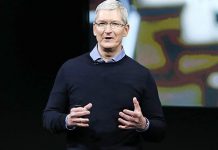 Arguably one of the big drivers for iPad and Android tablet adoption, besides the new form factor, has been price. Just like netbooks back in the day, tablets offered Internet and digital media access for a price far below that of traditional laptops and desktop PCs, and the home computer market has suffered accordingly. But what if Microsoft was able to drive down the prices, as well as multiply the form factors, of Windows machines, to compete head to head in the tablet/small portable device space? What is that going to do for the balance of OS uptake in the digital ecosystem?
Arguably one of the big drivers for iPad and Android tablet adoption, besides the new form factor, has been price. Just like netbooks back in the day, tablets offered Internet and digital media access for a price far below that of traditional laptops and desktop PCs, and the home computer market has suffered accordingly. But what if Microsoft was able to drive down the prices, as well as multiply the form factors, of Windows machines, to compete head to head in the tablet/small portable device space? What is that going to do for the balance of OS uptake in the digital ecosystem?
Because that is exactly what’s happening. You now have a new generation of ultra-cheap Windows 8+ tablets, facing off against the budget Android tablets, with Micro Center selling a no-brand WinBook Windows 8.1 device for just $59. Or, for a product from a more respectable manufacturer, you have the Toshiba Encore Mini or the HP Stream 7, both retailing for $99. Or the Archos 80 Cesium, with fairly solid specs, including an 8-inch, 1280×800 display, an Intel Atom Bay Trail quad-core processor, 1GB of RAM, and 16GB of storage, which will also likely debut at around $100. Want a Windows PC on a stick? A Chinese manufacturer will sell you one, again for about $100, to compete with all those Android-based TV sticks out there. Want a full Windows laptop for $199? Take a look at the Asus EeeBook.
Microsoft’s new policy of offering Windows free of charge to manufacturers of devices with smaller than 9-inch screens is obviously helping to drive this. And fine, Windows 8.1 on such devices is not attracting glowing reviews in some cases, but the manufacturers and Microsoft itself are hardly likely to stand still. For one thing, Microsoft’s new Signature Edition initiative aims to fix performance issues. “PCs with Signature are designed to be lightning-fast from the moment you turn them on,” claims Microsoft. And Windows 8.1 is now no longer a cut-down version like Windows RT but a fully specced OS, allowing smooth handoff from whatever desktop hub device you’re currently using to support your mobile units. This is putting heavy pressure on the budget segment: Archos, for instance, started off selling low-end Android tablets, but is now finding itself undercut by big-name-brand manufacturers.
IDC sees this as leading to just over 11 percent of global tablet market share for Windows devices by 2018, while competitors grow at a far slower rate. And of course, Windows owns most of the traditional PC space, albeit in a shrinking market. Couple this with Microsoft’s sustained income of up to $2 billion p.a. from Android royalties, and you can see that Windows-based mobile solutions are likely to be a durable and realistic alternative to Android or iOS devices for your ereading pleasure. They should also keep pressure on the tablet OS players to raise their game. After all, if the desktop PC and tablet experience can now be practically identical, who needs to accept compromises and limited functionality in a mobile OS?

































On one hand, I like the idea of a tiny device that can run a full Windows OS, but on the other hand, can I really use my programs on a 7 inch touchscreen? Most of the functionality of a PC that I don’t get in Android just isn’t available in the Windows appstore. I don’t think a small touchscreen would be precise enough to use legacy programs.